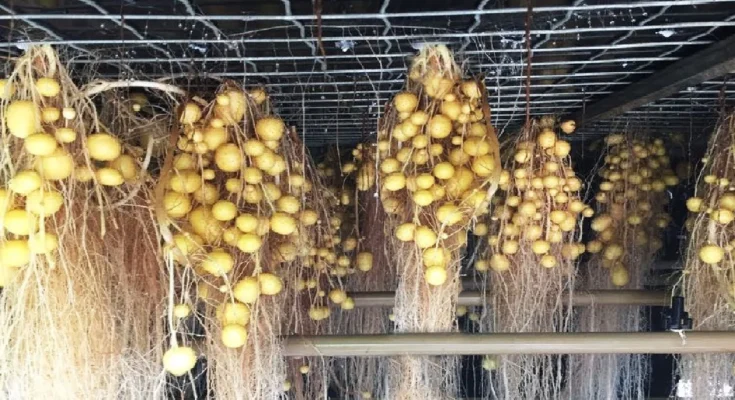The cultivation of potatoes has long been intertwined with tilled lands and soil. However, the advent of modern agricultural technology has ushered in innovative methods that allow farmers and enthusiasts to cultivate in ways previously deemed impossible. One such method is aeroponics, a technique that enables the growth of plants, including potatoes, in the air by spraying their roots with nutrient-rich solutions. This article delves into the intricacies of cultivating potatoes using the aeroponic method, offering insights into its benefits and step-by-step procedures.
Understanding Aeroponics
Aeroponics is a subset of hydroponics where plants are suspended in the air, and their exposed roots are regularly misted with a nutrient solution. This method boasts faster growth rates, higher yields, and a cleaner growing environment compared to traditional soil-based cultivation.
Necessary Materials
1. **Aeroponic System:** This includes a reservoir, a misting system, and supports for suspending plants. You can either purchase a pre-made system or create a DIY version according to your needs.
2. **Potato Tubers or Cuttings:** Choose healthy, disease-free tubers for planting. If using cuttings, ensure they have “eyes” from which sprouts can emerge.
3. **Nutrient Solution:** Provides essential nutrients for potato growth. Specific solutions for potatoes exist, but general-purpose vegetable solutions can also suffice.
4. **pH Testing Kit and pH Solutions:** Maintaining the right pH is crucial. A pH testing kit and solutions for adjusting pH (up or down) will ensure the nutrient solution remains within the optimal range for potato growth.
5. **Net Pots:** These containers hold potato cuttings or tubers in place while allowing roots to grow freely.
Steps for Aeroponic Potato Cultivation
1. **Setup:** Assemble your aeroponic system following manufacturer instructions or your DIY plan.
2. **Planting Tubers:** Place each potato tuber or seed cutting in a net pot, ensuring eyes are facing upward. For cuttings, a segment with 2-3 eyes is ideal.
3. **Nutrient Solution:** Prepare the nutrient solution per manufacturer instructions. Use the pH testing kit to check its level (optimal pH range for potatoes is 5.2 to 6.0). Adjust pH if needed.
4. **Misting:** The aeroponic system will mist the roots at regular intervals, ensuring they receive proper moisture and nutrients. Adjust misting frequency based on system and environmental conditions.
5. **Monitor Growth:** Keep an eye on potato growth, ensuring the nutrient solution doesn’t run out, and pH remains stable.
6. **Harvest:** When plants flower and start dying back, it’s time to harvest. Turn off the system and carefully remove potatoes from net pots.
Benefits of Aeroponic Potato Cultivation
1. **Reduced Disease Risk:** Without soil harboring pests or diseases, aeroponically grown potatoes often face fewer common potato ailments.
2. **Higher Yields:** Optimal nutrient and oxygen supply lead to faster and more abundant potato growth.
3. **Space Efficiency:** Vertical stacking of aeroponic systems makes them ideal for urban or space-constrained environments.
4. **Water Efficiency:** These systems use less water than traditional cultivation methods, making them environmentally friendly.
In conclusion, while the concept of growing potatoes in the air may seem futuristic, aeroponics is a present reality. Not only does it optimize potato growth, but it also does so sustainably and efficiently. As technology continues to transform agriculture, adopting such innovative methods can pave the way for a more food-secure future. Share this inspiration with friends and delve into the future of farming!




